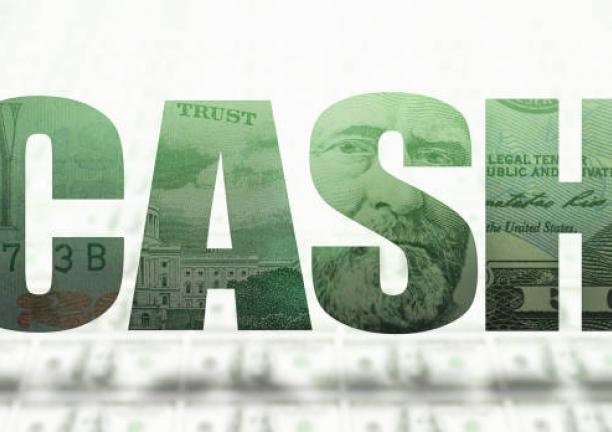The Bottom Line: Sustainable target date funds suffered steep total return declines to September 30, 2022, but more attractive valuations offer upside potential for long-term investors.
Investment Manager/Fund | Fund Structure | Start Year | Assets ($M) | Expense Ratios | Sustainable Investment Strategy |
BlackRock Fund Advisors/ BlackRock LifePath ESG Index Fund | Largely affiliated sustainable passively managed ETFs but also some mutual funds in a fund of funds like structure with target dates from 2025 to 2065 as well as a Retirement fund option. | 2020 | 25.1 | Range From 0.20% to 0.50%, depending on share class. | ESG Integration/best in class screening and Exclusions. Much of the investable universe consists of securities managed in the form of index tracking funds that optimize higher ESG ratings, subject to maintaining risk and return characteristics like the underlying index, after factoring in exclusions based on business practices and severe business controversies. A limited number of funds with limited exposures do not pursue ESG mandates, for example, iShares Developed Real Estate Index Fund. |
GuideStone Capital Management, LLC/ GuideStone Funds MyDestination Fund | Affiliated underlying active and passively managed mutual funds ranging in target dates from 2015-2055 that are advised by external independent investment managers. | 2006 | 4,736.6 | Range from 0.48% to 0.75%, depending on share class. | Values-based/Exclusions. Funds may not invest in any company that is publicly recognized, as determined by GuideStone Financial Resources of the Southern Baptist Convention, as being in the alcohol, tobacco, gambling, pornography or abortion industries, or any company whose products, services or incompatible activities. |
J.P. Morgan Investment Management/ JPMorgan SmartRetirement Fund | Primarily invest in other J. P. Morgan actively and passively managed mutual funds as well as ETFs. Target dates range from 2020 to 2065. | 2021# | 25,443.6 | Range from 0.40% to 1.45%, depending on maturity and share class. | ESG Integration. The adviser will assess how ESG risks are considered within an active underlying fund’s/manager’s investment process and how the active underlying fund/manager defines and mitigates material ESG risks. Although these risks are considered, underlying funds and securities of issuers presenting such risks may be purchased and retained by the fund. |
Natixis Advisors, L.P. (a unit of Natixis, a French-based firm)/Natixis Sustainable Future Fund | Affiliated underlying actively managed mutual funds ranging in target dates from 2015-2065 that are advised by affiliated investment managers (examples include Loomis Sayles and Harris Assoc.). | 2017 | 89.5 | Range from 0.50% to 0.55%, depending on share class. | ESG Integration, Exclusions and Thematic Investing. Implementation of ESG strategies may vary across underlying funds. Certain ESG strategies may also seek to exclude specific types of investments. Range of underlying funds also includes thematic funds, such as funds investing in green bonds or carbon neutrality. |
Notes of Explanation: #Existing funds rebranded, having posted on December 23, 2021 prospectus amendments to onboard the consideration of certain environmental, social and governance (ESG) factors in the investment process. For sustainable investing definitions, refer to Q&A: What is ESG investing and ESG integration @ https://sustainableinvest.com/qa-what-is-esg-investing-and-esg-integration/. Sources: Fund prospectus and related materials. Assets as of September 30, 2022, sourced to Morningstar Direct. Other sources: Sustainable Research and Analysis.
Observations:
- In tandem, equities and bonds suffered steep total return declines during the first nine and trailing 12-months of the year to September 30th, and this has upended target date funds in the short-run. Both conventional and sustainable target-date funds were impacted.
- Target date funds are managed to an internal asset allocation glide path pursuant to which a fund’s targeted mix of equity and fixed income allocations becomes more conservative over time as the target retirement date nears. This is achieved by shifting the mix of equity and fixed income investments on a regular basis, based on modeling to achieve optimal portfolio mixes and risk adjusted rates of return. Asset class exposures vary from one investment firm to another. For example, the Natixis Sustainable Future 2025 Fund, the next closest retirement date fund in the Natixis line-up, is intended for investors expecting to retire or to begin withdrawing assets around the year 2025. 57.34% of the fund’s assets are allocated to equities, both domestic and international, 40.69% to fixed income and 1.97% to cash¹. The elevated fixed income component is in theory intended to achieve stability in the portfolio. This compares to the longest dated Natixis Sustainable Future 2065 Fund that is 92.33% allocated to equities, only 5.60% to fixed income and 2.07% to cash.
- Bonds or bond funds fulfill various roles in target date portfolios, including capital preservation, diversification via the benefit of low or negative correlation to stocks that smooth out returns and protect investors against market swings, inflation protection using inflation protected bonds, and income generation. This hasn’t turned out this way so far in 2022 or over the trailing twelve months during which equities and bonds became more correlated. Stocks, as measured by the S&P 500, registered declines of -23.87% and -15.47% since the start of the year to September 30th and for the trailing 12-months while investment grade intermediate bonds, based on the Bloomberg US Aggregate Bond Index, gave up 14.6% during the same periods. These results translated into significant declines for conventional and sustainable target date funds. For sustainable target date funds in particular, results range from a low of -16.59% to a high of -26.38% for the longest maturity date in 2065.
- The unusual outcome over the last twelve months should not lead investors to abandon target date funds, especially now that valuations are more attractive and offer upside potential going forward. Still, fund managers may now be exploring further opportunities for achieving diversification, for example, by modeling the potential impacts of adding liquid alternatives, such as managed futures, merger-arbitrage, long/short and global macro strategies.
- Target date funds are ideal investment vehicles for overlaying sustainable investing strategies consistent with fiduciary responsibilities, given their long-term investment time horizon. Still, of 2,525 mutual funds/share classes offered by 33 fund firms with total net assets of almost $1.4 trillion, sustainable investors are limited to four sustainable target date fund options (120 mutual funds/share classes in total) with $30.3 billion in assets, or 2.2% of the total (a fifth fund is scheduled to come on stream in the first quarter of 2023²).
¹ As of January 31, 2022, the fund’s latest annual report. ² Shareholders were informed through a supplement to the Putnam RetirementReady Funds prospectus dated July 1, 2022 that the fund will be repositioned to invest mainly in Putnam Management-sponsored exchange-traded funds that focus on investments with positive sustainability or environmental, social, and governance (“ESG”) characteristics. The repositioning will take effect in the first quarter of 2023.





